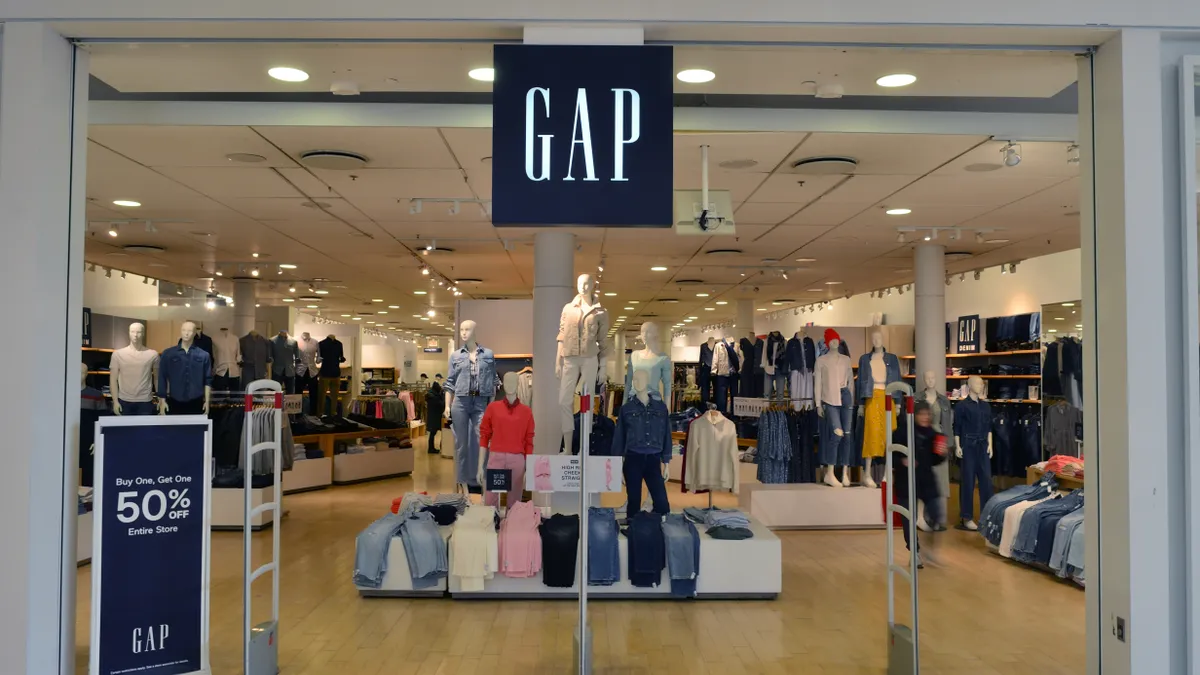Procurement improvements helped raise Gap Inc.’s profitability in the fourth quarter.
Lower commodity costs and “more effective sourcing strategies” helped drive a 5.3 percentage point spike in the apparel company’s gross margin year over year, CEO Richard Dickson said on the company’s earnings call. Margins also got a boost from leaner inventory and fewer price discounts.
Breaking down Q4 further, lower commodity costs and reduced air freight costs boosted merchandise margins by 3 percentage points, according to CFO Katrina O'Connell.
The company’s cost of goods sold (which also includes occupancy expenses) shrank by 6.8% YoY in Q4, according to its earnings release. Inventory fell by 16%, which gave the company an operational boost and helped reduce markdowns.
O’Connell credited the company’s operational discipline in helping to drive its procurement costs down and improve inventory management.
“The rigor we utilized in 2023 drove 380 basis points of expansion year-over-year as we recaptured a lot of inflation in the back half of the year and we had stronger assortments with the tighter inventories that we had overall,” the finance chief said.
O’Connell added that management expects continued benefits from lowered commodity costs in the first half of 2024, which will level out in the back half of the year.
Gap’s supply chain is among the company’s top priorities for Dickson, who was named CEO last summer.
“I recently returned from a two-week trip to Asia, during which I immersed myself in our supply chain infrastructure,” Dickson said on the Q4 call. “I spent time listening, learning, and understanding the facets of our supply chain network, and I've gained insight into the incredible longstanding partnerships that we have built over the years.”
On the company’s previous earnings call, Dickson praised the company’s supply chain but noted “we need to accelerate innovation.”
Asked about the recent sourcing improvements and their boost to margins, a Gap Inc. spokesperson said in an email that the scale of the company’s supply chain provides expertise and “economic leverage.”
As an example, the spokesperson pointed to linen fabrication for Gap’s “Linen Moves” campaign, and said that it “is a great example of how we take a big product idea and leverage our platform to deliver style, fit, quality and value.”
Gap — which owns Old Navy, Athleta, Banana Republic and others along with its namesake banner — sourced 30% of its merchandise from Vietnam and 17% from Indonesia in fiscal 2022, according to its latest 10-K.
This story was first published in our Procurement Weekly newsletter. Sign up here.














